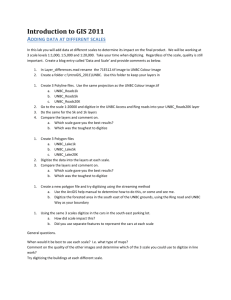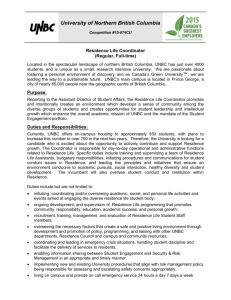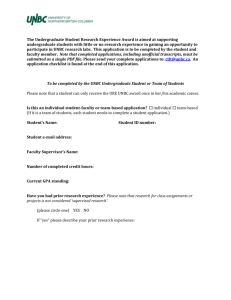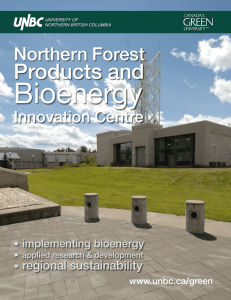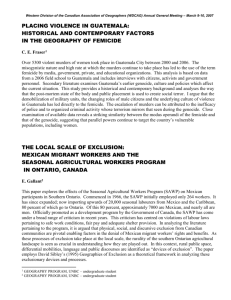Rural and Small Town Studies at UNBC
advertisement
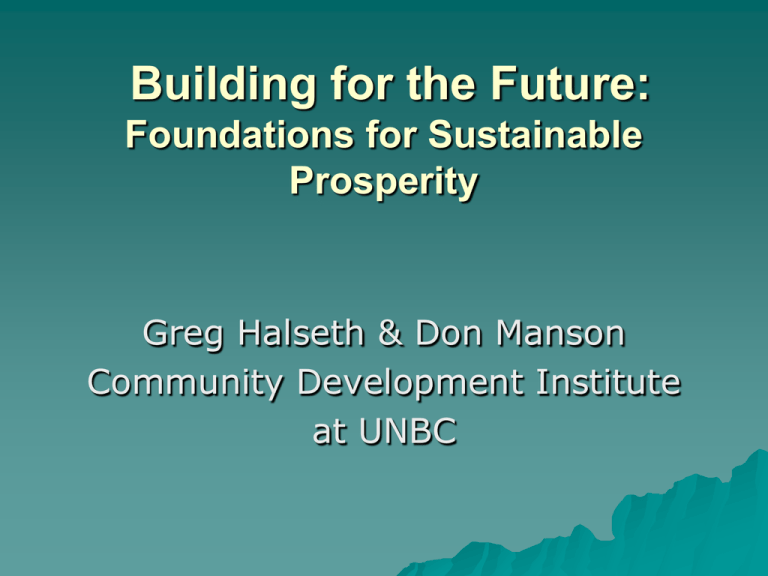
Building for the Future: Foundations for Sustainable Prosperity Greg Halseth & Don Manson Community Development Institute at UNBC Outline Introduction Community Development 1) Introduction Historically Natural resources maintained local economies Required many labourers Communities were ‘centres’ to local hinterlands Provincial government invested in these communities – Services – Facilities – Amenities Disrupted after 1980 A New Game Now Pressures since: International trade agreements Trade globalization Low cost production regions Resource industries are concentrating Technology is labour-shedding – Job losses – Limited wage benefits remain At Issue: Challenge – Small town and community change – Fast pace of globalization Opportunity – Building resilient communities based on local assets, actions & aspirations Question –How to equip communities to exercise place-based advantages & meet development opportunities & challenges on own terms? 2) Community Development Answer: Focus on Community Readiness Understanding the role / position of your region in the world Grounding strategies in a realistic, indepth analysis of our local & regional assets and aspirations Focus more on long-term implementation of vision Community Development Foundations The ability of communities to identify aspirations & organize assets and resources to achieve their objectives Increasing the skills, knowledge & abilities to access/use information & resources Create strategies & partnerships to take advantage of changing circumstances A long-term, sustainable vision that facilitates community well-being, quality-of-life & resilience Keys to Innovation Create a broad community development platform as a foundation for seizing opportunities Community Assets: Land & People Place-Based Development A place-based economy demands much more of local capacity Accommodates new relationships, partnerships, collaboration & wider inclusion Competitive variables: – Traditional: Infrastructure, production, location, economic structure & amenities – Newer: Social capital, innovation & institutions CD & Economic Development Rebundle community assets Reimagine community aspirations Reinvestments in local social, economic & cultural infrastructure From resource dependence to a diversified economy grounded in resources & inclusive of other options In Practice: Interdependent & Mutually Supportive The Community Development Institute at UNBC www.unbc.ca/cdi Lessons I A “new base for successful rural innovation” – Work as regions – Scale up/strategic partnerships – Focus on readiness – Key infrastructures Physical Human Community Economic Lessons II Re-bundle our competitive assets in innovative ways Attention to 4 "bottom lines" – – – – Community Economy Environment Culture www.unbc.ca/cdi Greg Halseth Professor, Geography University of Northern British Columbia http://www.unbc.ca/geography/faculty/halseth/index.html Canada Research Chair in Rural and Small Town Studies Community Development Institute – UNBC http://www.unbc.ca/cdi/

